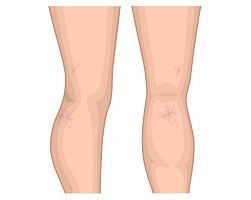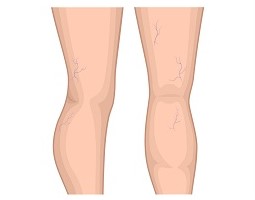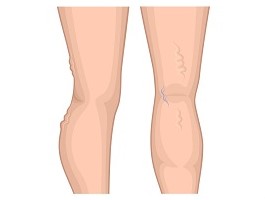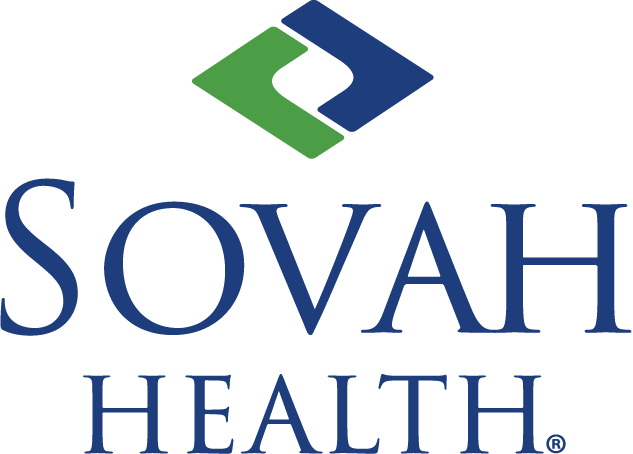Vein Center

Did you know that 40% of women and 25% of men suffer from the physical and/or social discomfort of varicose veins, or that 1 out of 2 people over the age of 50 reports having this condition? Thanks to emerging technologist and advanced techniques, our Vein Centers offer the highest level of patient care and best possible outcomes with fewer complications and less recovery time.
TAKE A VERICOSE VEIN HEALTH ASSESSMENT
Take a Peripheral Artery Disease Assessment
If you have questions about peripheral artery disease, start with a health assessment and learn more about any risks you may have for this condition.
Next Steps
Schedule a consultation
Ready to eliminate painful varicose veins? Call today to schedule your schedule your consultation with one of our board-certified cardiologists.
Search Online
To schedule your consultation with one of our board-certified cardiologists, search here.
Vascular Screening
Sovah Health offers a 30-minute, non-invasive vascular screening using ultrasound technology in an accredited vascular laboratory.
Watch this quick video to learn more:
Frequently Asked Questions
- How do I know if I have vein disease?
- How common is vein disease?
- What causes vein disease?
- Can vein disease be prevented?
- What is vein disease?
- What are the different types of vein disease?
- What are the treatment options for vein disease?
- Who should not be treated?
- If the vein is closed by the treatment, where does the blood go?
- What can happen if varicose veins aren’t treated?
- What are the complications of vein treatment?
- Do I need a referral?
- Will insurance cover vein treatments?
How do I know if I have vein disease?
Fortunately, most vein disease can be seen by looking at the size and color of the vein at the skin surface. In some cases, however, the diseased vein may be deeper in the body and not visible through the skin. As a result, paying close attention to other symptoms is important in diagnosing vein disease. Many patients with vein disease experience cramping, aching, burning, itching, soreness, or “tired” or “restless” legs, especially in the calf muscles. If you experience these symptoms, physicians and staff at the Vein Clinic can perform a simple test to determine whether you have vein disease.
How common is vein disease?
Vein disease of the legs is a common medical condition. It’s estimated that half of all middle-aged adults in the United States are affected by unsightly and often painful varicose veins. Varicose veins affect between 15-25% of all adults, and approximately 50% of all people over age 50. Women are twice as likely as males to develop varicose veins and spider veins.
What causes vein disease?
Heredity is the single greatest contributor to vein disease, as approximately 70% of all patients with varicose veins have parents with the same condition. Pregnancy, especially multiple pregnancies, is a contributing cause of vein disease. Other factors influencing vein disease are age, obesity and jobs that require long periods of standing. Additional factors may include a history of blood clots and conditions that increase pressure in the abdomen, such as tumors, constipation and tight garments, previous venous surgery, and exposure to ultraviolet rays.
Can vein disease be prevented?
Generally no. If you have a family history of vein disease, there is nothing you can do to change your genes. Being overweight can accelerate the progression of vein disease, and long periods of standing can also add to the problem. Diet and footwear are generally believed to be irrelevant in the formation of vein disease.
What is vein disease?
Veins are the blood vessels that return blood to the heart from the body. To overcome the force of gravity, inside the veins are one-way valves which open to allow blood flow to the heart, and close to prevent “reflux” of blood back toward the feet. When these valves fail to function, or if the vein is damaged so the valves do not completely close, blood can begin to pool in the vein and cause a variety of complications.
What are the different types of vein disease?
Spider veins are the small, thread-like colored veins that are most often seen on the surface of the skin. While many people seek treatment for spider veins for cosmetic reasons, spider veins also can result in substantial discomfort requiring therapy. Varicose veins are the large, “rope-like” veins which are often ¼˝ or larger in diameter. Varicose veins generally grow in size over time and can result in substantial pain and complications if not treated.
Difference between venous disorders

Spider Veins
- measuring about 1-1.5mm
- have a pink, red or purple color
- sometimes accompanied by pain and discomfort in the affected area

Reticular Veins
- size about 2mm in diameter
- color varies from green-blue to purple
- often causes burning and itching

Varicose Veins
- larger than 2.5mm in diameter
- usually have a dark blue or purple color
- veins often protrude above the surface of the skin and can lead to pain, burning and spasms
What are the treatment options for vein disease?
Depending on the type and stage of vein disease, there are many different treatments. The Vein Clinic physician and staff will explain all of the options. The following are common treatments performed for vein disease:
Compression Stockings
For minor pain from varicose veins, a compression stocking may be beneficial. The compression stocking will assist the leg in the pumping of blood back to the heart. While the vein disease symptoms may be relieved, compression stockings will not make the varicose veins go away.
Sclerotherapy
Used commonly for spider veins and small varicose veins, sclerotherapy involves injecting a small volume of a liquid into the diseased vein. The sclerosing liquid acts upon the lining of the vein to cause it to seal shut, eliminating the vein completely.
Sclerotherapy is quickly performed in a physician’s office and no anesthesia is required.
Surgical Stripping
Historically, the only treatment for large varicose veins has been to surgically remove or ‘strip’ the vein from the body. Surgical stripping is done in an operating room under anesthesia and requires a considerable recovery period for the patient. More recently, a modified version of stripping known as ambulatory phlebotomy has grown in use. In this version of surgical stripping, multiple incisions are made to hook and remove the vein one portion at a time. More incisions are made than in standard vein stripping, but the damage to the leg and post-surgery recovery time are minimized.
Endovenous Ablation Therapy
In the last several years, the use of endovenous ablation has become an accepted alternative to surgical stripping to treat varicose veins. In endovenous ablation therapy, a thin fiber is inserted into the diseased vein, generally through a small puncture in the leg above where the visual symptoms appear. The physician then delivers energy (radiofrequency or laser) through the fiber which causes the vein to close as the fiber is gradually removed. Endovenous ablation therapy is performed in an outpatient setting using local anesthesia. The patient will be asked to walk frequently, usually 10-15 minutes every hour, until bedtime the day of the procedure.
Who should not be treated?
Patients should wait at least three months after pregnancy or major surgery before being treated for vein disease. Persons with deep vein thrombosis may not be good candidates for this treatment. Even if you are unable to walk, we can work out a post procedure plan to accomplish the same goal: frequent and consistent leg movement the day of the procedure.
If the vein is closed by the treatment, where does the blood go?
Because there are many veins in the leg, the blood that would have flowed through the closed vein simply flows through other healthy veins after the procedure. The loss of the diseased vein is not a problem for the circulatory system.
What can happen if varicose veins aren’t treated?
Varicose veins generally worsen over time. Initially, slight pain and restlessness in the diseased leg will be felt. If untreated, pain, restlessness, swelling and cramping during sleeping will increase. Eventually worsening varicose veins can lead to open sores in the leg that are slow to heal. They can also lead to blood clots and tissue loss.
What are the complications of vein treatment?
Fortunately, sclerotherapy and endovenous ablation therapy have rarely been associated with any serious complications when properly performed. Common minor complications of these procedures include bruising, mild itching, tingling, tenderness and tightness in the treated leg for up to up to several weeks after the treatment.
Do I need a referral?
You will need to see one of the members of our cardiology service to perform an examination and order the required testing. They will work with you in setting up an appropriate treatment plan.
Will insurance cover vein the treatment?
Many insurance companies cover the treatment of vein disease that is associated with substantial pain and other complications.
Want to schedule an appointment with one of our providers? Call 844.467.6824 or visit SovahHealth.com/find-a-doctor.
